Stretching hiking boots is an important step in ensuring a comfortable and enjoyable hiking experience. Ill-fitting boots can cause blisters, sore feet, and even injuries. In this article, I will discuss different methods of stretching hiking boots, potential risks, special techniques, and tips for a successful stretch.
How To Stretch Hiking Boots
There are several ways to stretch hiking boots, including wearing thick socks, using a stretching spray, freezing water method, and using a shoe stretcher. Each method has its benefits and drawbacks, and it’s important to choose the one that works best for you. However, it’s essential to be aware of the potential risks of stretching hiking boots, such as damaging the material or weakening the structure of the shoe.
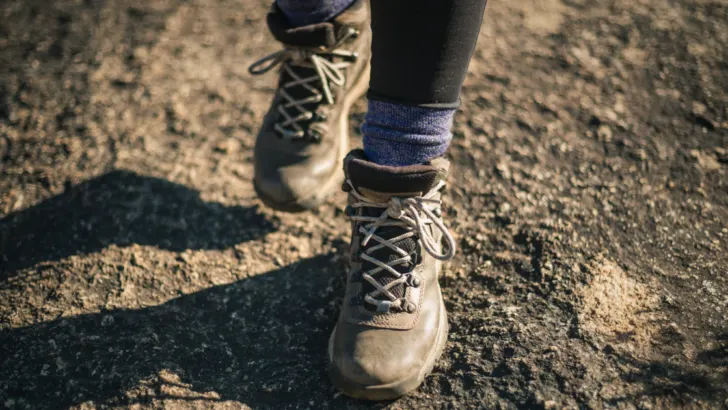
Key Takeaways
- There are several methods for stretching hiking boots, including wearing thick socks, using a stretching spray, freezing water method, and using a shoe stretcher.
- It’s important to choose the method that works best for you and to be aware of the potential risks of stretching hiking boots.
- Special techniques, such as heating up synthetic boots and using a stretching spray, can be helpful for a successful stretch.
Different Methods of Stretching Hiking Boots
When it comes to stretching hiking boots, there are several methods you can try. In this section, I will discuss three effective methods that have been tried and tested by hikers.
Using a Boot Stretcher
When it comes to stretching hiking boots, I’ve discovered that using a boot stretcher is a game-changer. It’s a simple yet effective device that can make a world of difference in the fit and comfort of your boots. Personally, I’ve had the best results with a boot stretcher that allows me to adjust both the length and width of my boots.
Using a boot stretcher is fairly straightforward. First, I insert the stretcher into my boots, making sure it fits snugly. Then, I turn the handle to gradually expand the stretcher, applying gentle pressure to stretch the material. It’s important to be patient during this process and avoid overstretching, as it could lead to damage.
Once the stretcher is in place, I leave it in my boots overnight or for a few days, depending on how much stretch I desire. This allows the boots to gradually conform to the shape of my feet, alleviating any tightness or discomfort. I’ve found that leaving the stretcher in for an extended period helps to achieve a more thorough and long-lasting stretch.
What I love about using a boot stretcher is that it gives me control over the stretching process. Whether I need a bit more room in the toe area or want to widen the overall width, the adjustable feature of the stretcher allows me to customize the stretch to my exact needs. It’s like giving my boots a personalized fit tailored to my feet.

I must say, the results have been impressive. Not only do my stretched hiking boots provide a more comfortable fit, but they also prevent blisters and foot fatigue during long hikes. With the added room, my toes have the freedom to wiggle and my feet feel supported in all the right places. It’s a small investment that has made a big difference in my hiking experience.
So, if you’re facing the frustration of tight or uncomfortable hiking boots, I highly recommend giving a boot stretcher a try. It’s a practical and reliable solution for achieving that perfect fit. Just remember to follow the instructions carefully, be patient with the stretching process, and enjoy the newfound comfort and freedom on your next hiking adventure.
Wearing Thick Socks
When it comes to stretching hiking boots, another tried and tested method that I’ve personally found effective is wearing thick socks. It’s a simple yet practical approach that can provide additional padding and help stretch your boots for a more comfortable fit.
To use this method, start by putting on a pair of thick socks. These socks should be slightly thicker than your regular hiking socks to create a bit more cushioning and pressure. Once you have your thick socks on, put on your hiking boots as you normally would.
Now, here’s where the magic happens. Walk around in your boots for a few hours, allowing the thick socks to exert pressure on the material of the boots. As you move and exert weight on your feet, the combination of the thick socks and the confined space inside the boots will gradually stretch the material. This method works particularly well if you wear your boots for extended periods, such as during a day hike or while running errands.
For an even greater stretch, you can experiment with wearing two pairs of thick socks. Layering the socks increases the bulk and pressure, facilitating a more significant stretch. However, be cautious not to overdo it, as too much pressure can cause discomfort or strain on your feet.

I’ve found that using thick socks to stretch hiking boots is a convenient and cost-effective solution. It’s particularly useful when you need a slight adjustment or have a specific area in your boots that feels snug. Plus, it’s a method you can easily incorporate into your regular hiking routine without any additional tools or equipment.
Remember, the key to successful stretching with this method lies in consistency and patience. While the results may not be as immediate as using a boot stretcher, over time, you’ll notice a gradual improvement in the fit of your boots. Keep in mind that this method may not work as effectively for boots made of extremely rigid or non-stretchable materials.
So, if you’re looking to stretch your hiking boots without investing in additional tools, give the thick sock method a try. It’s a simple and practical approach that can help you achieve a more comfortable fit and enhance your overall hiking experience.
Using a Hair Dryer
When it comes to stretching hiking boots, an unconventional yet effective method I’ve personally tried is using a hair dryer. It may sound surprising, but the application of heat can help relax the material and make it more pliable for stretching.
To use this method, begin by putting on a pair of thick socks. These socks will act as a buffer between your skin and the hot air from the hair dryer, preventing any discomfort or burns. Once you have your socks on, put on your hiking boots.
Next, set your hair dryer to a medium or high heat setting and direct the hot air toward the tight areas of your boots. Move the hair dryer back and forth to evenly distribute the heat and avoid concentrating it in one spot for too long. Be careful not to hold the hair dryer too close to the boots to avoid overheating or damaging the material.
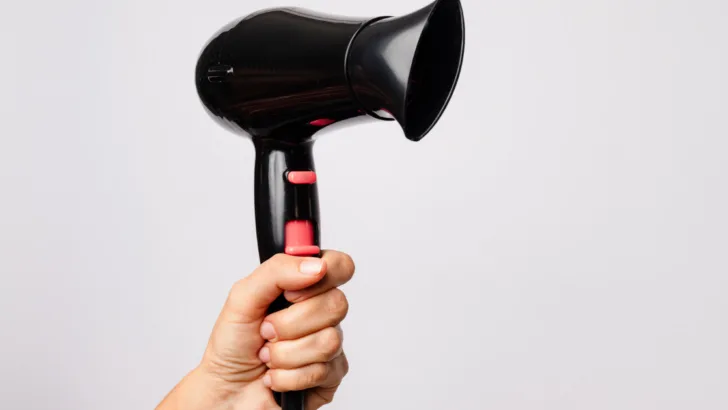
As the hot air penetrates the boots, it will help soften the material and make it more pliable. While the boots are still warm, walk around in them for a few minutes. This allows the boots to stretch and mold to the shape of your feet. The combination of heat and pressure will aid in expanding the tight areas.
Repeat this process of applying heat, walking in the boots, and assessing the fit. It may take several cycles of heating and stretching to achieve the desired level of comfort. Remember to listen to your feet and stop if you experience any discomfort or excessive tightness.
Using a hair dryer to stretch hiking boots can be an effective method, especially for targeting specific tight spots. However, exercise caution and avoid overheating the boots, as this could cause damage. Additionally, this method is more suitable for boots made of natural or synthetic materials that can withstand heat.
It’s important to note that the hair dryer method may not provide as significant or long-lasting results as using a boot stretcher or professional stretching services. If you have extremely tight or rigid boots, it’s recommended to consult a professional cobbler or outdoor retailer for specialized stretching techniques.
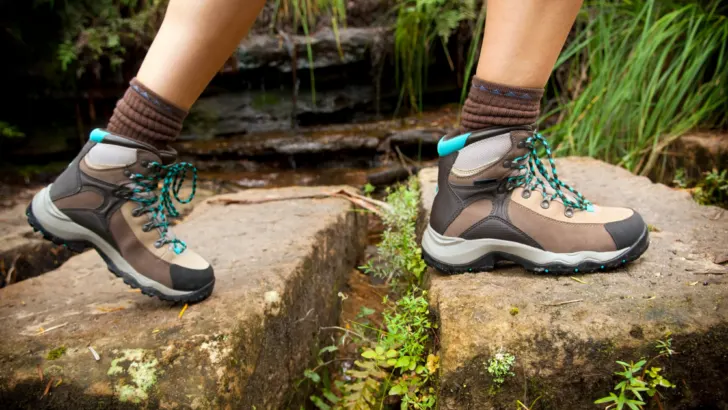
Remember to always prioritize your comfort and safety when stretching hiking boots. Take the time to assess the fit and make adjustments accordingly. With patience and the right techniques, you can achieve a more customized fit that enhances your hiking experience.
Overall, these are just a few of the many ways you can stretch hiking boots. Each method has its own advantages and disadvantages, so it’s important to choose the one that works best for you. With a little bit of patience and persistence, you can stretch your hiking boots to achieve the perfect fit for your feet.
Potential Risks of Stretching Hiking Boots
Stretching hiking boots can be a great way to make them more comfortable, but it’s important to be aware of the potential risks involved. Here are a few things to keep in mind before you start stretching your boots.
Over-Stretching the Boots
When it comes to stretching hiking boots, it’s essential to exercise caution and avoid overstretching. Overstretching can lead to the loss of shape and support in your boots, compromising their overall comfort and performance.
To prevent overstretching, it’s crucial to adopt a gradual and careful approach. Avoid attempting to stretch your boots too aggressively or all at once. Instead, opt for a gradual stretching process that allows the boots to adjust and mold to your feet without sacrificing their structure.
If you’re using a boot stretcher, start by inserting it into the boots and turning the handle or knob to expand it slightly. Begin with a conservative stretch and leave the stretcher in the boots for a shorter duration, such as overnight or for a few hours. After this initial stretching period, assess the fit of the boots to determine if additional stretching is required.
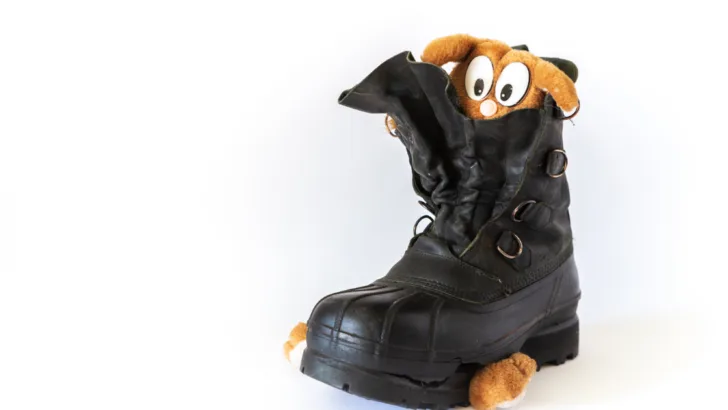
Regularly check the boots during the stretching process to ensure they are not becoming excessively loose or losing their shape. It’s important to strike a balance between achieving a comfortable fit and maintaining the boots’ structural integrity.
When using methods like wearing thick socks or using a hair dryer, exercise caution to avoid overstretching. Follow the recommended guidelines and timeframes for each method. Remember that the goal is to achieve a comfortable fit, not to force the boots to stretch beyond their limits.
If you notice that your boots are becoming too loose or losing their support, it may be a sign that you have over-stretched them. In such cases, it’s best to consult a professional cobbler or visit an outdoor retailer for advice on how to restore the boots’ shape and support.
By taking a gradual and cautious approach to stretching your hiking boots, you can strike the right balance between achieving a customized fit and maintaining their structural integrity. Remember, it’s better to stretch them conservatively and make adjustments as needed rather than risk overstretching and compromising their overall performance.
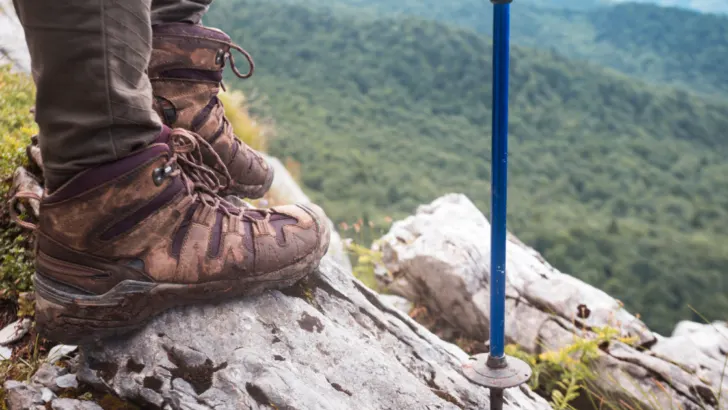
Damaging the Materials
Another risk of stretching hiking boots is damaging the materials. If you stretch them too aggressively, you can cause the leather or other materials to crack or tear. This can weaken the boots and make them less durable over time.
To avoid damaging your boots, make sure you’re using a stretching method that’s appropriate for the materials. For example, some methods are better suited for leather boots than for synthetic ones. And if you’re not sure how to stretch your boots properly, consider consulting a professional.
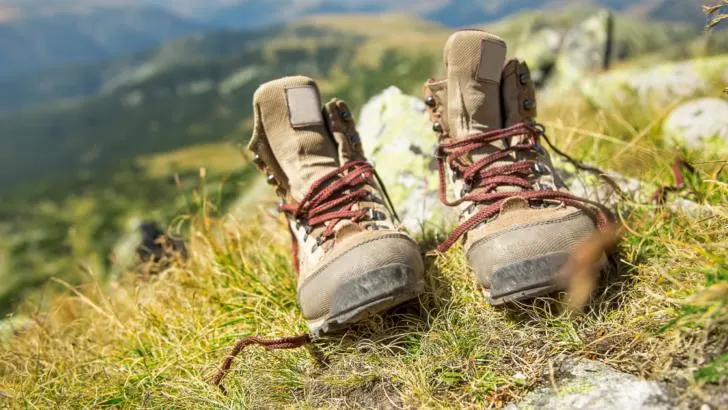
Overall, stretching hiking boots can be a great way to improve their fit and comfort. But it’s important to be aware of the potential risks involved and to take steps to minimize them. By stretching your boots carefully and using the right methods, you can enjoy a more comfortable and enjoyable hiking experience.
Special Stretching Techniques
As an experienced hiker, I know that finding the perfect pair of hiking boots can be a challenge. Even after breaking them in, there may still be areas that are too tight or uncomfortable. That’s where special stretching techniques come in handy. Here are some effective methods to stretch hiking boots for wide feet, bunions, and high arches.
How to Stretch Hiking Boots for Wide Feet
If your feet are wider than average, you may find that your hiking boots are too snug. Here are some ways to stretch them:
- Wear thick socks: Wearing thick socks can help stretch the boots naturally. You can also try wearing two pairs of socks for extra stretching.
- Use a stretching spray: There are many stretching sprays available that can help soften the leather and make it more pliable. Simply spray the inside of the boots and wear them until they dry.
- Use a boot stretcher: A boot stretcher is a tool designed to stretch the width of boots. Insert the stretcher into the boots and adjust it to the desired width. Leave it in place for a few hours or overnight.
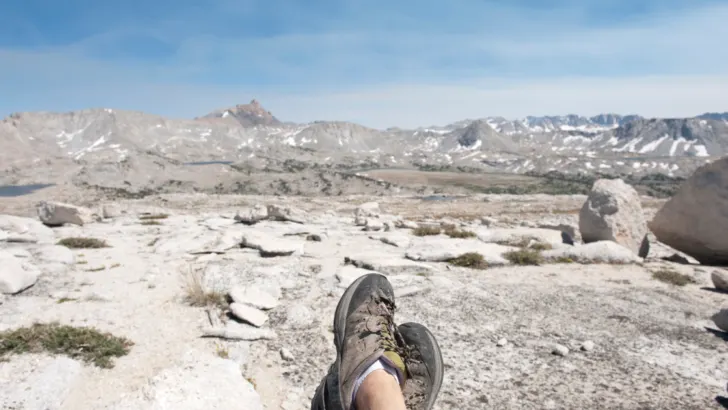
How to Stretch Hiking Boots for Bunions
Bunions can make it difficult to find comfortable hiking boots. Here are some ways to stretch your boots to accommodate bunions:
- Use a stretching spray: As mentioned earlier, a stretching spray can be effective in softening the leather and making it more pliable. Spray the inside of the boots, paying extra attention to the area around the bunion.
- Use a bunion stretcher: A bunion stretcher is a tool designed to stretch the area around the bunion. Insert the stretcher into the boots and adjust it to the desired size. Leave it in place for a few hours or overnight.
- Use a shoe stretcher: If you don’t have a bunion stretcher, a shoe stretcher can also work. Insert the stretcher into the boots and adjust it to the desired size. Leave it in place for a few hours or overnight.
How to Stretch Hiking Boots for High Arches
If you have high arches, you may find that your hiking boots are too tight in the middle. Here are some ways to stretch your boots to accommodate high arches:
- Use a stretching spray: Yes, you guessed it. A stretching spray can be effective in softening the leather and making it more pliable. Spray the inside of the boots, paying extra attention to the area around the arches.
- Use a stretching machine: A stretching machine is a tool designed to stretch the entire boot. Insert the boots into the machine and adjust it to the desired size. Leave it in place for a few hours or overnight.
- Use a professional: If you’re not comfortable using a stretching machine, you can take your boots to a professional cobbler or shoe repair shop. They have the tools and expertise to stretch your boots properly.
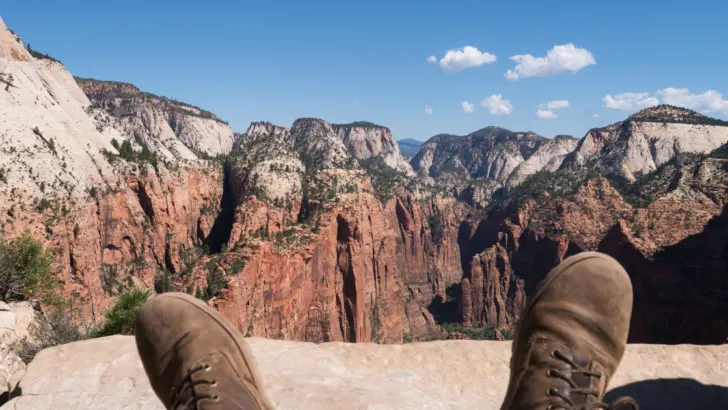
By using these special stretching techniques, you can make your hiking boots more comfortable and enjoyable to wear on your next adventure.
A Comparison of Different Methods of Stretching Hiking Boots
When it comes to stretching hiking boots, there are several methods that can be used. In this section, I will compare some of the most popular methods and provide some information on their effectiveness.
Method 1: Wear Your Boots Inside the House
This is one of the most common methods of breaking in a new pair of boots. It involves putting on your boots and walking around the house with them on your feet. While it may take some time, this method is effective and will ensure that you remain pain-free on the trails.
Method 2: Using a Boot Stretcher
A boot stretcher is a tool that is designed to stretch out the toe box and other areas of your boots. It is a great option for those who want to stretch their boots quickly and efficiently. However, it can be expensive, and not everyone may have access to one.
Method 3: Using a Shoe Tree
A shoe tree is a device that is inserted into your boots to help maintain their shape and prevent them from becoming misshapen. It can also be used to stretch out your boots, although it may take some time to achieve the desired results.
Method 4: Stuffing the Boot with Socks, Balls, or Newspaper
This method involves stuffing your boots with socks, balls, or newspaper to help stretch them out. While it may be effective, it can also be time-consuming and may not provide the desired results.
Method 5: Using a Hair Dryer
Using a hair dryer to heat up your boots is another popular method of stretching them out. While it may be effective, it is important to be careful not to overheat your boots, as this can cause damage to the material.
Method 6: Using Ice
The ice method involves putting water inside the toe box of your boots and then putting them in the freezer. As the water freezes into ice, it helps to stretch out the toe box. This method is simple and effective, although it may not work for all types of boots.
Overall, there are several methods that can be used to stretch out hiking boots. Each method has its pros and cons, and the effectiveness of each method may vary depending on the type of boots you have. It is important to choose a method that is safe and effective for your specific needs.
Tips for Stretching Hiking Boots
When it comes to hiking, having comfortable boots is essential. However, new boots can often be too tight and cause discomfort and blisters. Here are some tips that I have found helpful for stretching hiking boots:
1. Wear Them Around the House
One of the simplest ways to stretch your hiking boots is to wear them around the house. Put on a pair of thick hiking socks and lace up your boots. Then, walk around your house for a few hours each day until the boots start to feel more comfortable. This method will help to break in the boots and stretch them out gradually.
2. Use a Boot Stretcher
A boot stretcher is a handy tool that can help to stretch out tight boots. You can purchase a boot stretcher online or at a shoe store. Insert the stretcher into your boots and adjust it to the desired width. Leave the stretcher in place for a few hours or overnight, and then remove it. Repeat the process until the boots have stretched out to your liking.
3. Try a Stretching Spray
There are several stretching sprays available that can help to stretch out your hiking boots. Look for a spray that contains a mixture of water and rubbing alcohol. Spray the solution inside your boots and then wear them until they dry. This method can help to stretch out your boots quickly and effectively.
4. Use a Hairdryer
Using a hairdryer to stretch out your hiking boots is another effective method. Put on a pair of thick socks and then put on your boots. Use the hairdryer to blow hot air onto the tight areas of your boots for a few minutes. While the boots are still warm, wiggle your toes and move your feet around to help stretch out the leather.
5. Fill the Boots with Water
This method is a bit more extreme, but it can be effective for stretching out very tight boots. Fill a plastic bag with water and insert it into your boots. Make sure that the bag is sealed tightly and then put your boots in the freezer overnight. As the water freezes, it will expand and stretch out the leather. Thaw the boots out and then wear them until they dry.
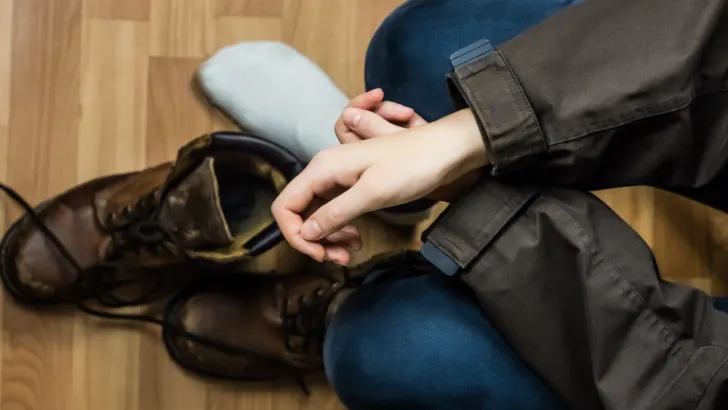
By using one or more of these methods, you can stretch out your hiking boots and ensure that you have a comfortable and enjoyable hiking experience.
A Case Study of a Hiker Who Successfully Stretched Their Hiking Boots
As an avid hiker, I’ve gone through my fair share of hiking boots. I’ve tried breaking them in by wearing them around the house, but sometimes, even after weeks of use, they still don’t feel quite right. That’s why I decided to try stretching my hiking boots.
I did some research and found a few methods, but the one that worked best for me was freezing water in the toe box. I filled a ziplock bag with water, made sure it was sealed tightly, and then placed it inside my boots. I squeezed the bag in as far as I could and then put my boots in the freezer overnight.
The next morning, I took my boots out of the freezer and let them thaw for a few minutes. I then removed the ziplock bag and tried on my boots. To my surprise, they felt much more comfortable and had a little more room in the toe box.
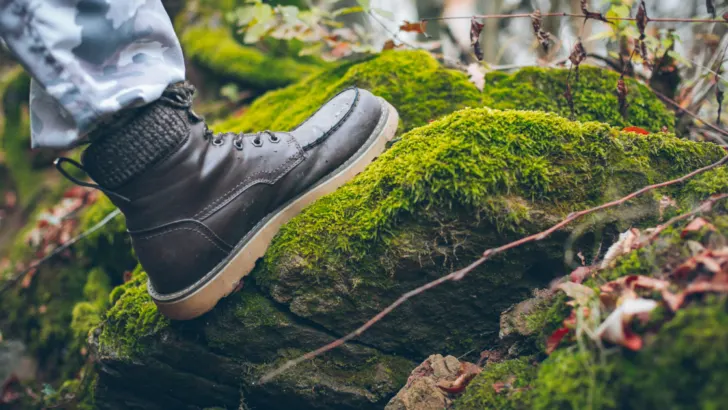
I repeated this process a few times over the course of a week, and each time my boots felt a little more comfortable. I also found that wearing my boots around the house and on short walks helped to speed up the stretching process.
It’s important to note that not all hiking boots will respond well to stretching. Leather boots, for example, may require a different method or may not stretch at all. It’s also important to be patient and not force your boots to stretch too quickly, as this can damage the materials and shorten the lifespan of your boots.
Overall, I was happy with the results of stretching my hiking boots and would recommend it to others who are struggling to break in their new boots.
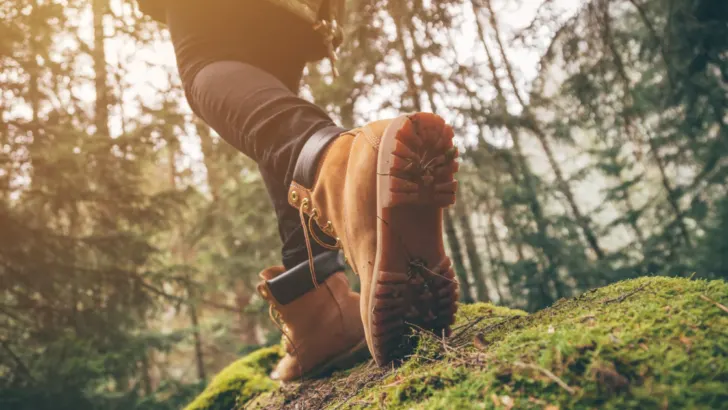
Benefits of Stretching Hiking Boots
As an avid hiker, I understand the importance of having comfortable and well-fitting hiking boots. One way to achieve this is by stretching your hiking boots. In this section, I will discuss the benefits of stretching hiking boots and how they can improve your hiking experience.
Stretching Hiking Boots for Comfort
Stretching hiking boots can significantly improve the comfort level of your boots. By stretching your boots, you can make them more flexible and accommodating to your foot shape. This can help alleviate any pressure points or hot spots that may be causing pain or discomfort during hiking activities. A comfortable pair of hiking boots can make a significant difference in your overall hiking experience, allowing you to hike for longer periods without experiencing discomfort.
Stretching Hiking Boots for Prevention of Blisters
Blisters can be a real nuisance for hikers, especially when breaking in new hiking boots. However, by properly stretching your boots, you can minimize the risk of blisters and ensure a comfortable fit that won’t cause painful rubbing or friction.
When boots are too tight, they can create pressure points and areas of friction against your feet, resulting in blisters. By stretching your boots to the appropriate size and shape, you can alleviate these issues and enjoy blister-free hiking adventures.
Stretching your boots allows them to conform to the unique contours of your feet, reducing the likelihood of uncomfortable rubbing. This process helps eliminate potential hotspots and areas prone to blister formation, ensuring a smoother and more enjoyable hiking experience.
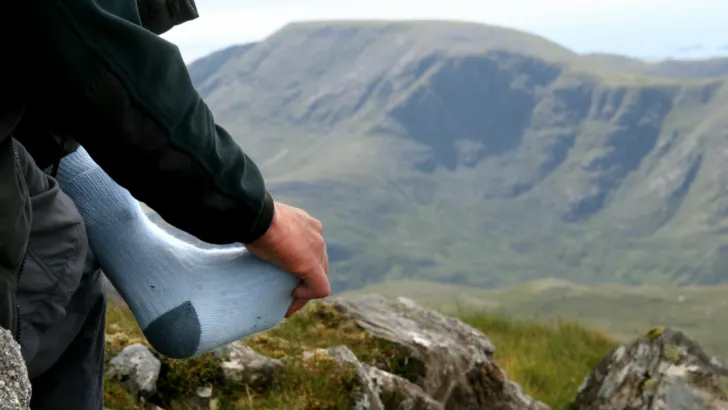
By ensuring that your boots fit properly and do not squeeze or pinch your feet, you create a more favorable environment for your skin. This helps prevent excessive moisture build-up and friction that can lead to blisters.
So, whether you’re breaking in new boots or adjusting the fit of your current pair, stretching can make a significant difference in preventing blister formation. It’s a proactive measure that allows you to focus on the beauty of the trail rather than worrying about painful foot blisters.
Remember, prevention is key when it comes to blisters. By taking the time to properly stretch your hiking boots, you’re investing in your foot comfort and overall hiking enjoyment. Say goodbye to blisters and embrace the freedom of blister-free hiking adventures.
Stretching Hiking Boots for Preventing Injuries
Properly fitting hiking boots are essential for preventing injuries and ensuring a safe and comfortable hiking experience. Ill-fitting boots can lead to a range of issues, including ankle sprains and knee pain. However, by taking the time to stretch your hiking boots, you can optimize their fit and minimize the risk of these injuries.
When boots are too tight or don’t provide adequate support, they can put unnecessary strain on your feet, ankles, and knees. This can lead to discomfort, instability, and even more severe injuries when navigating challenging terrain.
Stretching your hiking boots helps customize the fit to your specific foot shape and size, ensuring optimal support and reducing the risk of injuries. By gently expanding the material and creating additional room where needed, you enhance the boot’s ability to conform to your feet’s natural contours.

Properly fitting boots with the right amount of stretch can help stabilize your ankles, reduce the risk of sprains, and minimize the impact on your knees. This is particularly important when navigating uneven terrain or carrying a heavy backpack during your hikes.
Investing time in stretching your hiking boots is an investment in your safety and comfort on the trails. By ensuring a snug yet comfortable fit, you can hike with confidence, knowing that your boots provide the necessary support and protection for your feet and ankles.
Remember, prevention is key when it comes to hiking injuries. By taking the proactive step of stretching your boots, you’re actively reducing the risk of ankle sprains, knee pain, and other discomforts that can hinder your hiking adventures.
So, lace up your properly stretched hiking boots, hit the trails, and embark on your outdoor pursuits with the assurance that your feet and ankles are well-supported and protected. Stay injury-free and enjoy the wonders of nature with each confident step you take.
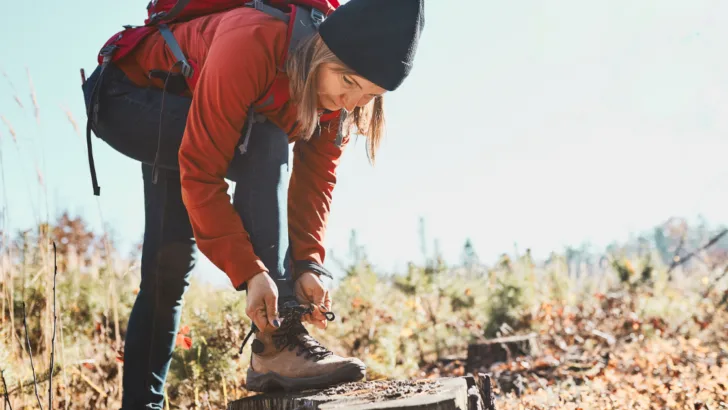
In conclusion, stretching your hiking boots can provide several benefits, including improved comfort, prevention of blisters, and prevention of injuries. By taking the time to stretch your hiking boots, you can ensure that you have a comfortable and safe hiking experience.
Conclusion
In this article, I have shared various methods to stretch your hiking boots for ultimate trail comfort. The purpose of this article was to help you alleviate the discomfort caused by tight-fitting hiking boots and make your hiking experience more enjoyable.
If you have been struggling with tight-fitting hiking boots, try out the methods discussed in this article to stretch them out. Remember to choose the right method depending on the material and construction of your boots and be patient with the process.
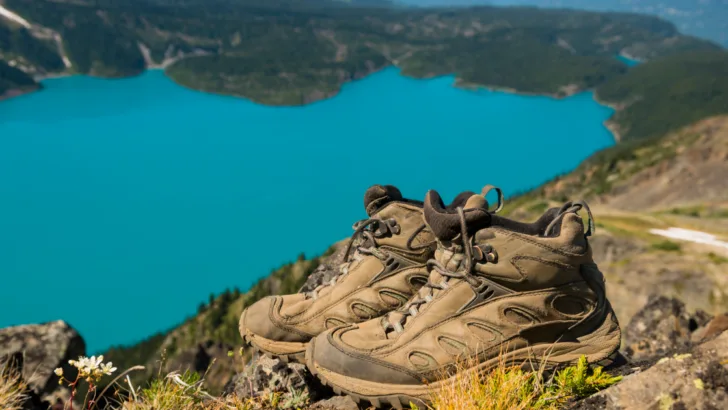
By stretching your hiking boots, you can prevent blisters and discomfort, and make your hiking experience more enjoyable. So, lace up your boots and hit the trails with happy feet!
If you’re looking for a more comfortable and supportive option, you may want to consider hiking boots instead of Vans. However, if you do decide to use Vans, be sure to stretch them out first and read ‘Are Vans Hiking Shoes Good?.
Resources
Frequently Asked Questions
What is the best way to stretch the toe box of my hiking boots?
The best way to stretch the toe box of hiking boots is by using a boot stretcher. You can also try stuffing the toe box with wet newspaper or socks and leaving them overnight. However, be careful not to overstretch the toe box as it may cause discomfort and affect the support of the boot.
How can I stretch my hiking boots without damaging them?
One way to stretch hiking boots without damaging them is by wearing them around the house and for short walks to gradually break them in. You can also use a stretching spray or liquid specifically designed for hiking boots. Be sure to follow the instructions carefully and avoid using excessive force or heat, which may damage the materials.
Is it possible to stretch Gore-Tex hiking boots?
Yes, it is possible to stretch Gore-Tex hiking boots, but you need to be extra careful as the membrane can be damaged if exposed to excessive heat or moisture. It is best to use a stretching spray or liquid designed for Gore-Tex materials and follow the instructions carefully.
Will my new hiking boots eventually stretch to fit my feet?
Yes, new hiking boots will stretch and mold to your feet over time with regular use. However, it is important to ensure that the boots fit comfortably and provide adequate support from the start to avoid discomfort and injury.
Should hiking boots fit tight at first or be roomier?
Hiking boots should fit snugly around the sides and heel of your foot, but not be too tight or uncomfortable. It is recommended to leave about an inch of space in the front for your toes to prevent blisters and allow for foot swelling during long hikes.
Can hiking boots be stretched up a size or is it better to buy a new pair?
It is not recommended to stretch hiking boots up a size as it may affect the overall fit and support of the boot. It is better to buy a new pair that fits properly from the start to ensure comfort and safety during hikes.
